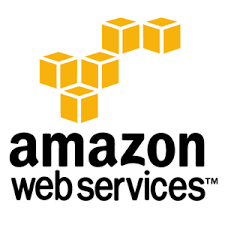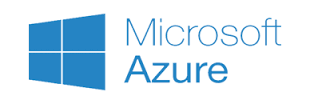Research by Gartner Inc. ![]() suggests that the market for infrastructure as a service (Iaas) will reach $16.5 billion this year. Among the leaders in this sector are offerings from Amazon and Microsoft. In this article, we’ll look at how their products compare.
suggests that the market for infrastructure as a service (Iaas) will reach $16.5 billion this year. Among the leaders in this sector are offerings from Amazon and Microsoft. In this article, we’ll look at how their products compare.
The Old vs. The New
Amazon Web Services (AWS) began operating in 2006, and has used the decade since to establish a place as the leading name in hosted cloud provision. Gartner reckons that AWS currently has five times the network capacity of the combined weight of its 14 largest rivals.
Microsoft Azure set up shop in 2010. Its focus has primarily been on PaaS (Platform as a Service), but its scope of infrastructure provisions has expanded to make it one of the market leaders. Though nowhere near the size of Amazon, Microsoft’s offering is still about twice as big as its nearest competitor.
Similar Features
Azure and AWS provide the things you’d expect of a public cloud, such as automatic scaling, self-service facilities and instant provisioning, as well as security protocols, compliance measures and identity management tools.
Both services have begun catering for the Internet of Things (IoS), with the inclusion of machine learning tools and other features. Mobile developers can use AWS or Azure to create apps and operating environments.
Big data analytics can be performed on both platforms, with Amazon’s Elastic Map Reduce (EMR) and Microsoft’s HDInsight providing support for Hadoop clustering. Both AWS and Azure provide Docker services, for containerized virtual machines.
Differences in Approach
AWS splits its core functions into four feature sets![]() : Databases, Compute, Storage & Content Delivery, and Networking. Administrative controls include auditing, monitoring, logging, identity management, and the creation, control and storage of encryption keys.
: Databases, Compute, Storage & Content Delivery, and Networking. Administrative controls include auditing, monitoring, logging, identity management, and the creation, control and storage of encryption keys.
AWS is predominantly cloud-based, with applications and data residing almost exclusively on Amazon’s public cloud.
Azure sets its menu out as these distinct categories: Build infrastructure, Gain insights from data, Develop modern applications, and Manage identity and access.
Microsoft has opted for the hybrid cloud approach, with users urged to split workloads and resources between the cloud and their own in-house data centers. Applications may reside on both the Azure cloud and local servers. In some cases, partial apps may be stored locally, and hook up to cloud resources for the same application, when required.
Storage Options
Temporary or ephemeral storage is allocated under Amazon AWS whenever an instance commences. It’s destroyed once an instance terminates. Block Storage can be allocated to each instance (acting like a hard drive), or held separate. The S3 Service provides object storage under AWS, with archiving via their Glacier service.
AWS provides support for NoSQL and relational databases, along with Big Data.
D drive temporary storage and Page Blobs (equivalent to Amazon’s Block Storage) are featured by Microsoft Azure. These may be applied to virtual machine (VM) based volumes. Object storage is provided by Block Blobs and Files.
Windows Azure Table and HDInsight are Microsoft’s frameworks for databases and Big Data handling, respectively.
Networking
Both Azure and AWS have the capability to allow extension of your in-house data center into the hybrid or public cloud.
Virtual Private Clouds (VPCs) operate under AWS, and the VNET or Virtual Network lets Azure clients’ group virtual machines into isolated cloud-based networks. Network topology, ranges for private IP addresses, route tables, subnets, and network gateways may be created and managed using both systems.
Compute Facilities
The EC2 or Elastic Compute Cloud is at the core of AWS for setting up virtual machines. Custom machine images (AMIs) or pre-configured ones may be used. You can choose the number of VMs, together with their memory capacity, power, and size. There are also options to select ![]() geographical regions and availability zones in which to launch them.
geographical regions and availability zones in which to launch them.
Load balancing (ELB) distributes the load among multiple instances, and the auto scaling facility can drive EC2 capacities up or down, as required. Kinesis operates under the AWS Hadoop framework, EMR, and can process data streams in real time.
Microsoft’s Virtual Hard Disk or VHD was put on general release in 2013. Like the Amazon AMI custom machine imaging tool, it’s used to generate virtual machines. These may be user-defined, third-party, or chosen from a set of Microsoft templates. The Apache Storm engine does real-time data processing under HDInsight, Microsoft’s Hadoop set-up.
Compliance and Statutes
For government agencies looking to migrate to the cloud, Amazon offers the AWS GovCloud, a region of the Amazon service specifically established to meet the regulatory compliance needs of the U.S. government. Standards like the health industry’s HIPAA can be met from within the GovCloud, to which logical and physical access is restricted.
Microsoft’s Azure Government is a similar idea, but has only been recently introduced. The company’s focus remains on servicing existing Microsoft users, with corporate clients on Windows Server, Office, Exchange, and the like providing the bulk of Azure’s customer base.
Azure works best in tandem with other Microsoft products. Though it will integrate with some flavors of Linux (Oracle and SUSE, mainly), support for the open-source platform is severely limited. In contrast, AWS is fully integrated with the likes of Red Hat Enterprise Linux (RHEL), a favorite among corporate users.
Comparing Prices
From a minimum of one hour, AWS charges are based on the number of hours you use – rounded up, to the nearest. Instances may be paid for On-Demand (“pay as you go”), Reserved (from 1 to 3 years, with a charge upfront based on utilization), or as Spot payments (with customers bidding for additional capacity as it becomes available).
Users on Azure are charged on demand, with costs based on how many minutes you consumed. Some short-term contracts with discounts are also available.
Making the Choice
The cloud service you select will be determined by your specific needs, and the type of workloads you have to manage. It may even be the case that different services will suit the requirements of different divisions, within the one enterprise.
Hopefully, this comparative guide will assist you, in making the right choice.


